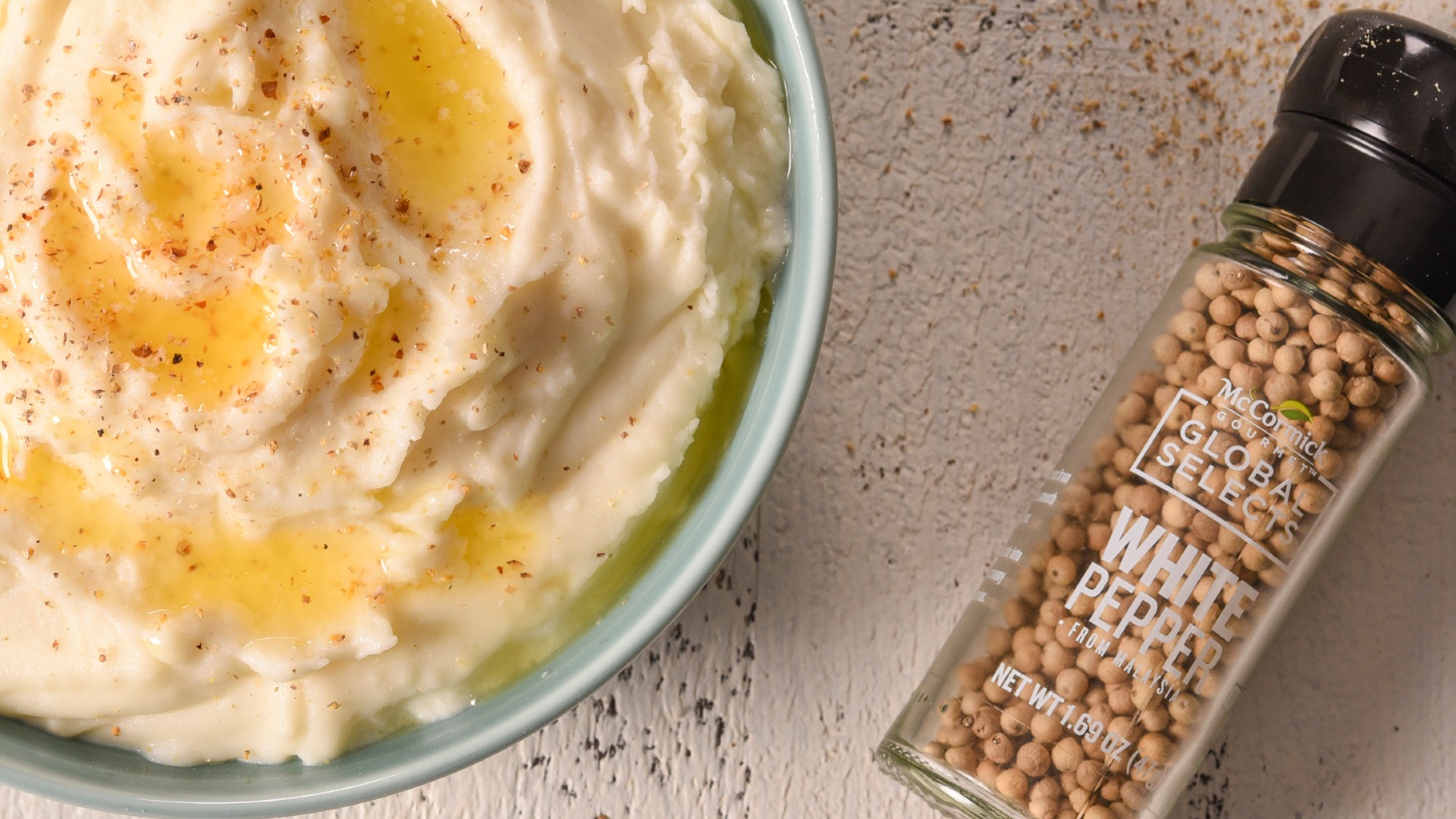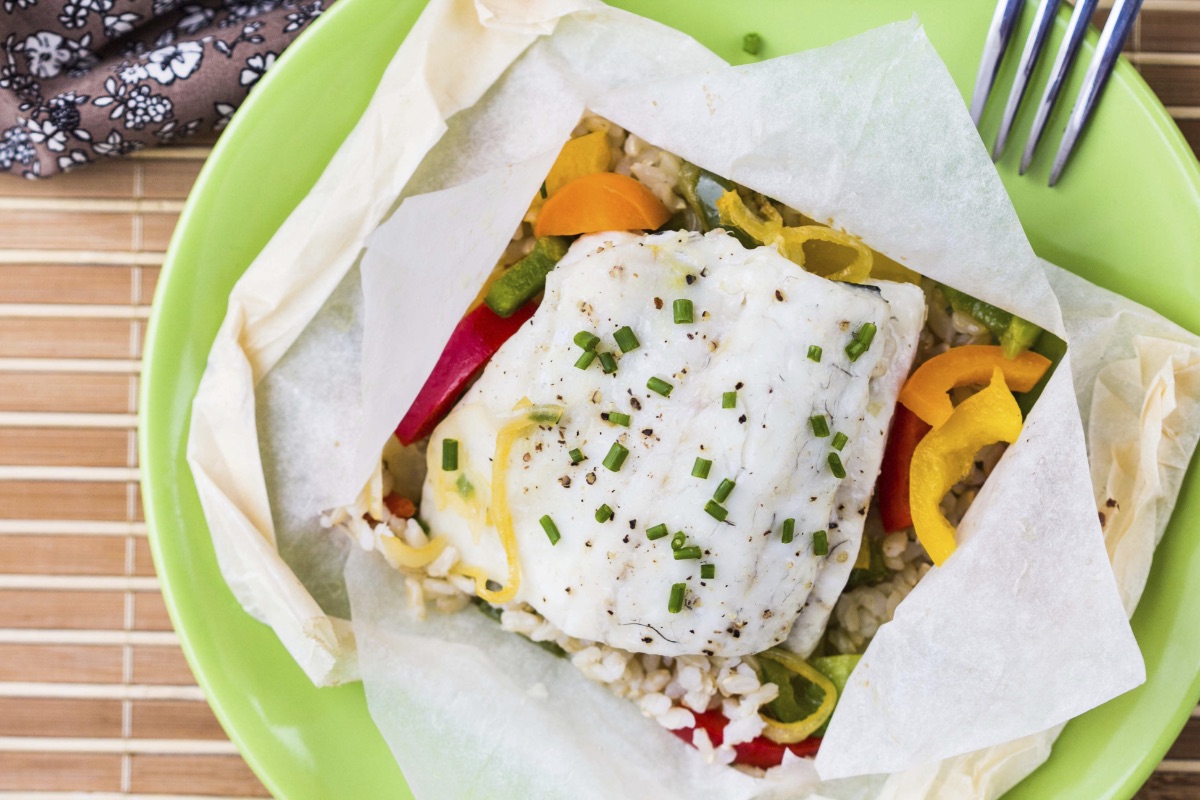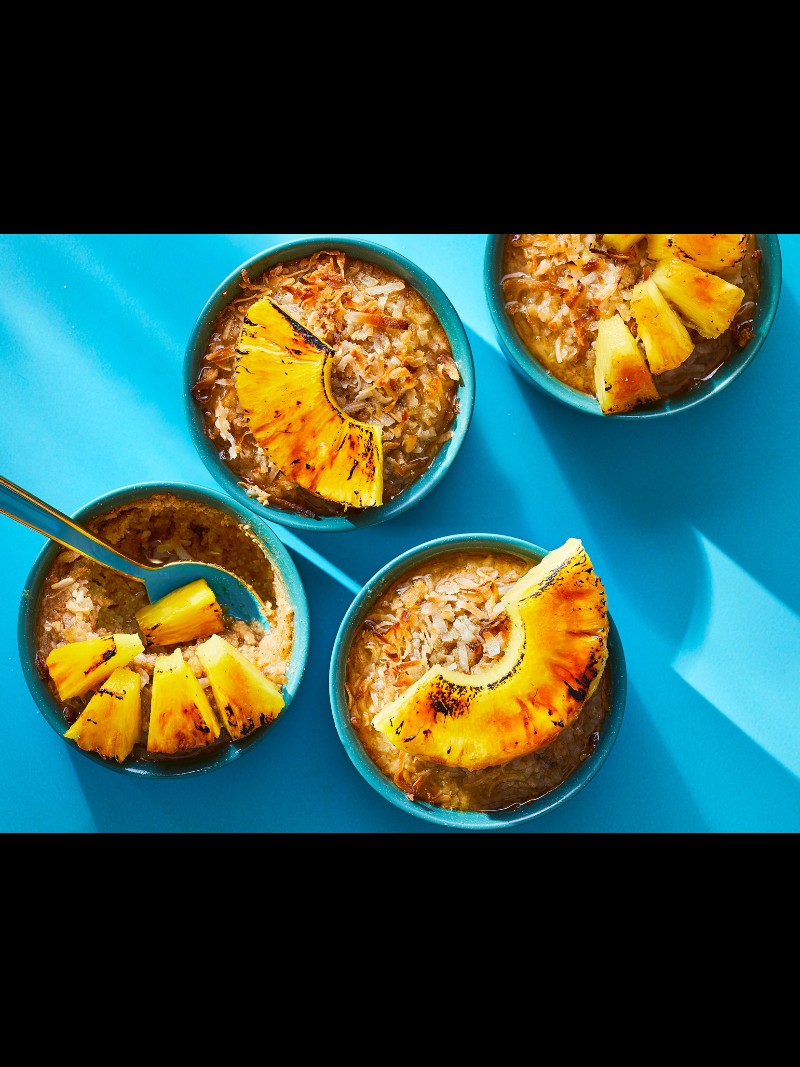Use white pepper to season light-colored dishes like cream sauces, soups, potatoes, pasta and seafood. White pepper has a pungent flavor so use less than you would black pepper.
WHITE PEPPER VS BLACK PEPPER
White pepper is a distinctive spice that’s much different than its black pepper counterpart. White pepper adds a touch of elegance to dishes with its light cream, whiteish hue and mild sweet flavor, followed by subtle heat undertones. Sold in grocery stores and spice markets as whole peppercorns or as ground white pepper, this spice may be more difficult to find than black peppercorns.
White pepper originates from the fully ripened berries of the Piper nigrum plant, which undergo a soaking process followed by the removal of the outer skins prior to drying. Due to the processing, white pepper contains fewer essential oils than black pepper and is generally more expensive.
WHAT DOES WHITE PEPPER TASTE LIKE?
Typically considered milder in flavor than black pepper, white pepper has a bright, earthy flavor. While white pepper has an introductory hot taste, some detect hints of must and ginger that complement its subtle heat. Although subjective, the intriguing white pepper flavor varies depending on the amount of processing the peppercorns undergo.
WHAT IS WHITE PEPPER USED FOR?
White pepper is fantastic for a variety of dishes, especially white sauces and light-colored recipes that would benefit from subtle heat without the presence of black specks. This spice is a great flavor enhancer, delivering a deep complexity with earthy attributes. An ideal ingredient for rubs, marinades and soups, its pungent aroma and sharp taste complement a wide range of cuisines, in particular Asian. White pepper’s unique attributes play a special role in soups, meats and stir-fries, blending seamlessly with other seasonings. White pepper is also a popular ingredient in European cuisine. Although white pepper presents a subtle heat, it is still a very potent flavor. White pepper can also be used as a garnish.
FLAVORS THAT GO WITH WHITE PEPPER:
Add some more flavor to your meals with these herbs and spices. They go great with white pepper.
- Paprika: Think of paprika as the gentler, sweeter cousin of hot chili peppers. It enlivens your favorite dishes with fruity notes and a toasty red color without ever taking over the show. McCormick sources whole paprika pepper pods from farmers in warm, dry climates. The paprika grown and bottled by McCormick is nothing but the purest. Paprika is a New World spice, meaning it didn’t take hold in Europe until the 1600s, where it was introduced to Europeans by Bulgarians and Turks. Perhaps best known as the garnish on deviled eggs, our pure paprika has a world of other uses. Use it as an addition to soups, rubs, marinades, sauces and more.
- Parsley: The feathery leaves of the dill plant add fresh green flavor to lighter dishes such as salads, seafood and vegetables. Also great in dips, spreads and homemade pickles.
- Thyme: The plant’s tiny leaves—just a quarter inch at most in length—must be carefully harvested, cleaned, dried and milled to retain their rich color, piney aroma and earthy flavor. In the ancient world, thyme was a symbol of courage and bravery. One of the highest compliments to pay a Greek warrior, for instance, was to say he smelled of thyme. And in the Middle Ages, thyme was used to fend off nightmares. Today, our pure thyme holds its greatest place of honor in the kitchen as one of our most popular herbs.
- Garlic: Dried garlic takes on a mellow, round flavor that elevates recipes both savory and sweet. McCormick partners with family owned farms to grow garlic that can be used as powder or minced. It adds instant flavor into whatever you’re cooking because our bottles contain garlic and only garlic, and nothing else. Garlic is a member of the lily family, native to Central Asia and cousin to leeks, chives, onions and shallots. It’s the most pungent of the lilies, with a strong flavor and aroma. Unless you’re using it to ward off vampires, as people have done since the 1700s, it pays to use allium sativum with a gentle hand.
- Cumin: Our pure cumin is an easy way to add deep, earthy citrusy flavors to spark your favorite meals. Cumin is one of the top 10 selling spices in the U.S. The spice dates back to Egypt 4,000 years ago, and McCormick Cumin is hand-harvested, sun-dried and carefully screened so you know you're getting nothing but the purest flavor. Add this spice for a warm flavor and earthy color to everyday soups, stews, meats and vegetables.
HOW LONG DO SPICES LAST?
While dried herbs and spices typically last for 1–2 years, there are some exceptions worth noting when it comes to the shelf life of spices. Maintain the freshness of your spices and herbs with these helpful storage tips.
GRAB YOUR WHITE PEPPER PRODUCTS!
AND TRY THESE RECIPES THAT USE WHITE PEPPER:
- Chilled Chinese Dumplings With Creamy Dukkah Sauce
- Air Fryer Maple Glazed Carrot Fries
- Shiitake & Bacon Rice Balls With Spicy Ginger Sauce
Want to create a meal plan for your white pepper recipes? Need help planning your weekly meals and want to try new recipes? Save your favorite food, dessert, drink recipes and organize your ingredients with the McCormick Meal Planner.







